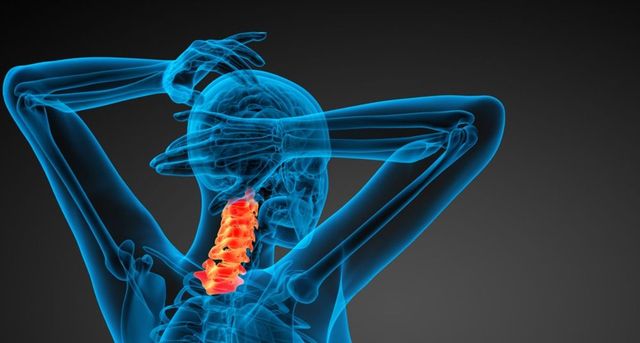Discover Family Chiropractic Approaches to Wellness
Exploring Spinal Decompression Methods: What You Required to Know for Better Spine Treatment
Spinal decompression methods are essential for people experiencing chronic back pain or spinal concerns. These techniques range from non-invasive therapies to surgical choices, each developed to relieve stress on the spine. Recognizing these methods is essential for reliable spine care. Not all methods are suitable for every condition. The subtleties behind each technique warrant closer evaluation, as they can greatly affect recuperation and overall health outcomes. What elements should one take into consideration prior to deciding?
Understanding Spinal Decompression
Spinal decompression may seem complicated, it basically refers to a variety of techniques aimed at minimizing pressure on the spinal cord and surrounding nerves. The spinal column is an essential framework that supports the body and shields essential neurological paths. When compression happens, it can bring about pain, discomfort, and decreased mobility. Understanding spinal decompression involves identifying the sources of this stress, such as herniated discs, spinal stenosis, or injury. By attending to these underlying problems, decompression strategies seek to restore proper alignment and function. This procedure can involve both non-surgical and medical approaches, customized to specific person demands. The objective is to improve the lifestyle by relieving discomfort, boosting stance, and promoting far better activity. As recognition of spinal wellness expands, the relevance of recognizing spinal decompression ends up being significantly appropriate for those seeking efficient treatment alternatives
Usual Spinal Decompression Methods
Spinal decompression methods encompass a series of approaches designed to alleviate pressure on the back and its connected structures. These techniques can be generally categorized into non-surgical and medical approaches. Non-surgical techniques consist of spinal traction, where mild drawing pressures are related to the spinal column, producing room in between vertebrae. This can minimize nerve compression and promote recovery. Chiropractic care modifications also fall under this group, focusing on realigning the spine to improve feature.
Surgical decompression techniques include treatments such as laminectomy, where a portion of the vertebra is eliminated to alleviate stress on the spinal cord or nerves. Discectomy, one more medical choice, requires the removal of herniated disc product. Additionally, minimally intrusive techniques, like endoscopic discectomy, are obtaining appeal due to their minimized recuperation times. Each method serves a details purpose and might be picked based on private person requirements and the extent of their spinal condition.
Advantages of Spinal Decompression
When considering the numerous methods to handling spinal issues, the advantages of spinal decompression techniques end up being obvious. These methods aim to relieve pressure on the spinal discs and nerves, which can relieve pain and improve total spinal health. By producing area in between vertebrae, decompression promotes enhanced blood circulation and nutrient circulation to the affected locations, assisting in recovery and recovery.
Furthermore, spinal decompression can aid restore the natural positioning of the spinal column, potentially minimizing the threat of future injuries. Patients often report boosted flexibility and flexibility following treatment, leading to an improved lifestyle. Moreover, the decrease in stress can decrease signs and symptoms connected with conditions such as herniated discs, sciatica, and spinal constriction, providing a non-invasive alternative to more invasive procedures. Overall, spinal decompression techniques provide a variety of therapeutic and physical benefits, making them a beneficial part of considerable spinal column care.

That Can Profit From Spinal Decompression?
Individuals struggling with chronic neck and back pain, herniated discs, or spinal stenosis might find substantial alleviation through spinal decompression techniques. This non-invasive treatment can be particularly advantageous for those experiencing nerve compression signs and symptoms, such as tingling, numbness, or weakness in the arm or legs. Professional athletes recovering from injuries or people with degenerative disc illness might also consider spinal decompression as a sensible alternative for pain monitoring and improved flexibility.
Furthermore, prospects for spinal decompression typically include those who have actually not responded well to standard therapies, such as medicines look at this site or physical treatment. It can likewise function as an alternative for individuals looking for to avoid surgical treatment. Overall, spinal decompression methods can give a therapeutic choice for various individuals dealing with spinal concerns, aiding them regain a better of life and useful ability. Consulting a health care specialist is important to establish the suitability of this treatment for specific conditions.
Considerations and Precautions for Spinal Decompression

The sort of spinal decompression technique-- whether non-surgical or surgical-- should straighten with the individual's specific problem and total health standing. Tracking throughout the procedure is vital to attend to any adverse responses promptly. People need to also comprehend that spinal decompression is not a one-size-fits-all service; a substantial therapy strategy might include physical treatment or way of life adjustments to support recuperation. In general, sticking to these safety measures can significantly boost the efficacy of spinal decompression treatments and advertise optimal back health.

Frequently Asked Concerns
How much time Does a Common Spinal Decompression Session Last?
A normal spinal decompression session lasts in between 30 to 45 mins. This duration enables suitable therapy while ensuring the client continues to be comfy and obtains adequate attention to their particular spinal problems and requirements.
Can Spinal Decompression Be Done in the house?
Spinal decompression can be executed in the house with particular workouts and tools, such as inversion tables or back dental braces. Consultation with a healthcare professional is recommended to assure safety and security and performance in specific cases.
Is Spinal Decompression Painful?
Spinal decompression is typically not unpleasant; nevertheless, individuals may experience moderate discomfort or stress throughout the treatment. Discomfort levels can differ based upon the individual's condition and the approach made use of for decompression.
The Amount Of Procedure Are Normally Required for Alleviation?
Normally, individuals might need 6 to 10 sessions of spinal decompression treatment to experience considerable relief (Family Chiropractic). The precise number can differ based on private conditions and actions to treatment, demanding tailored evaluation by healthcare experts.
Exist Any Type Of Age Limitations for Spinal Decompression?
There are normally no stringent age restrictions for spinal decompression therapy. Nonetheless, suitability may depend on private wellness conditions and the certain strategy utilized, so appointment with a health care specialist is advised for tailored suggestions.
Spinal decompression techniques are necessary for people experiencing persistent back visit here discomfort or spinal concerns. Spinal decompression might appear complex, it basically refers to a range of strategies aimed at easing stress on the spinal cable and surrounding nerves. When considering the numerous approaches to managing spinal problems, the benefits of spinal decompression techniques become obvious. People experiencing from chronic back pain, herniated discs, or spinal constriction might find substantial alleviation with spinal decompression methods. Generally, spinal decompression techniques can offer a therapeutic choice for numerous people facing spinal problems, assisting them restore a higher high quality of life and practical ability.